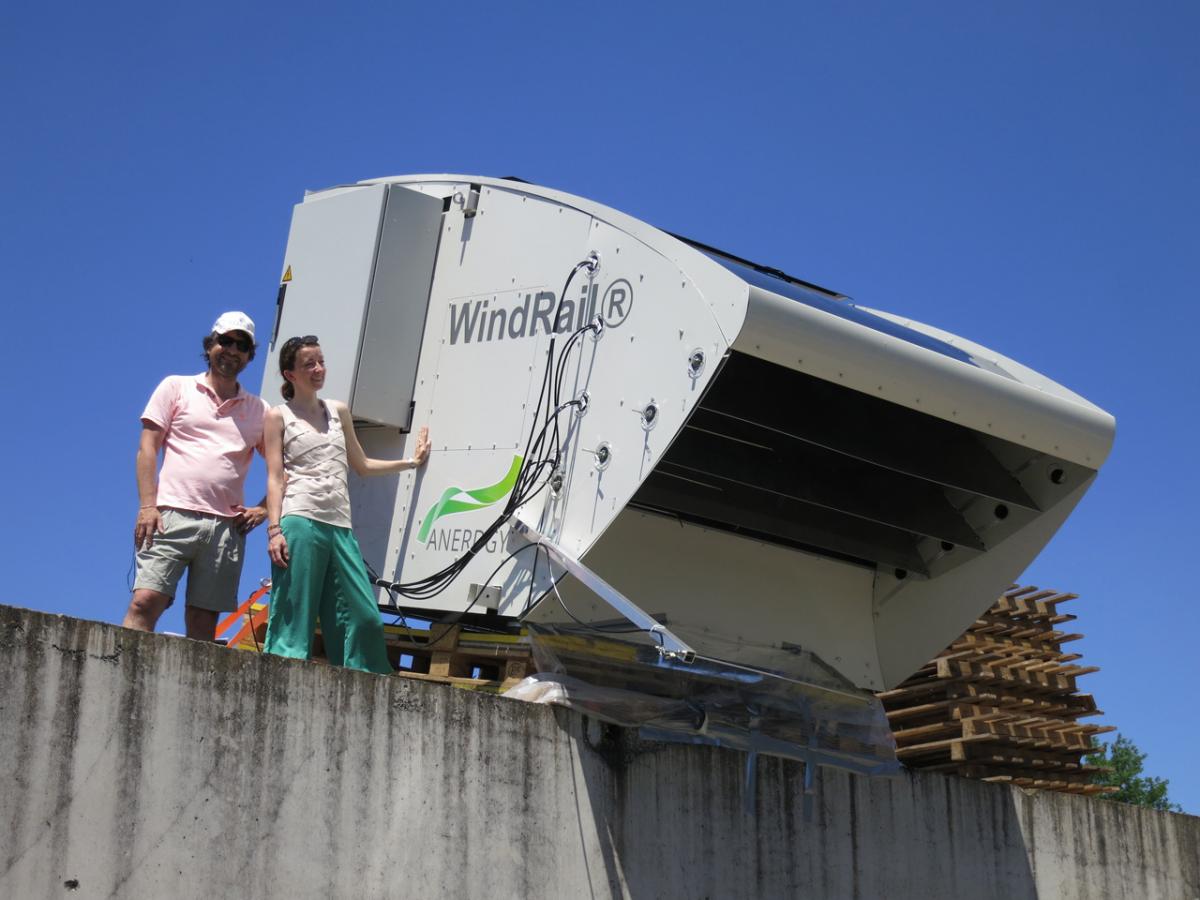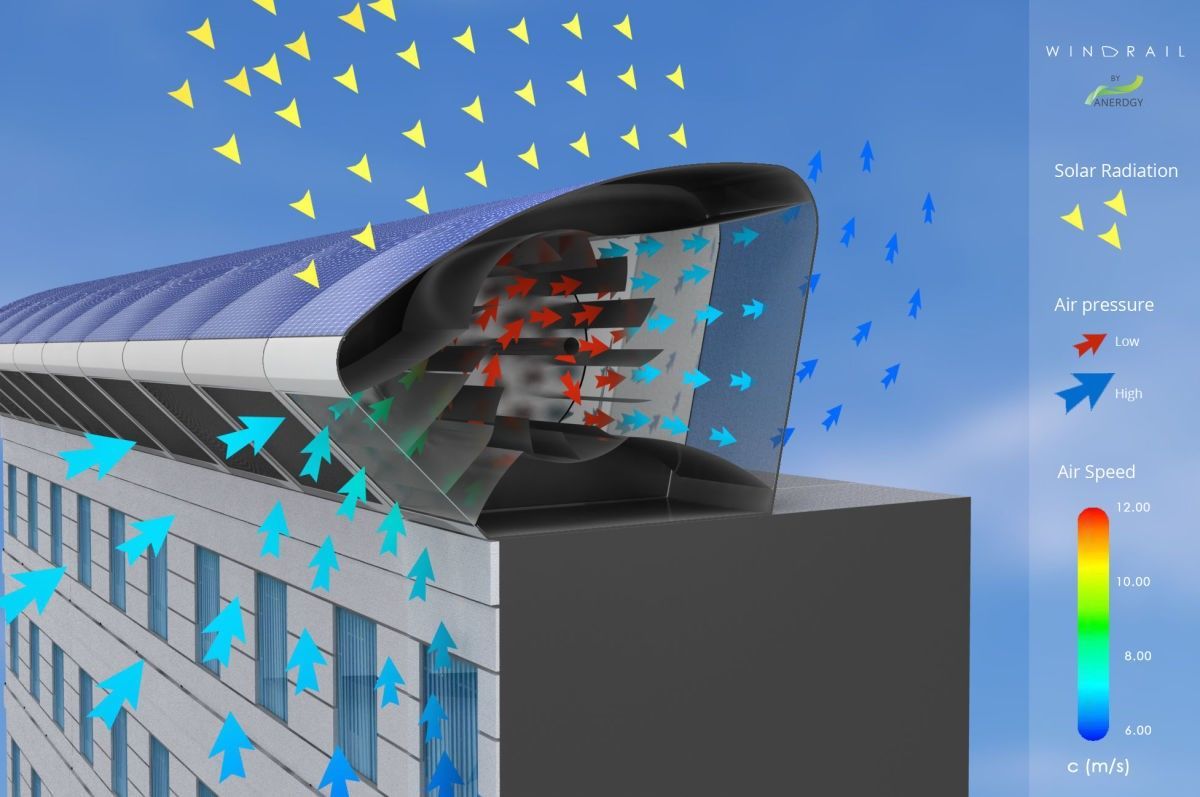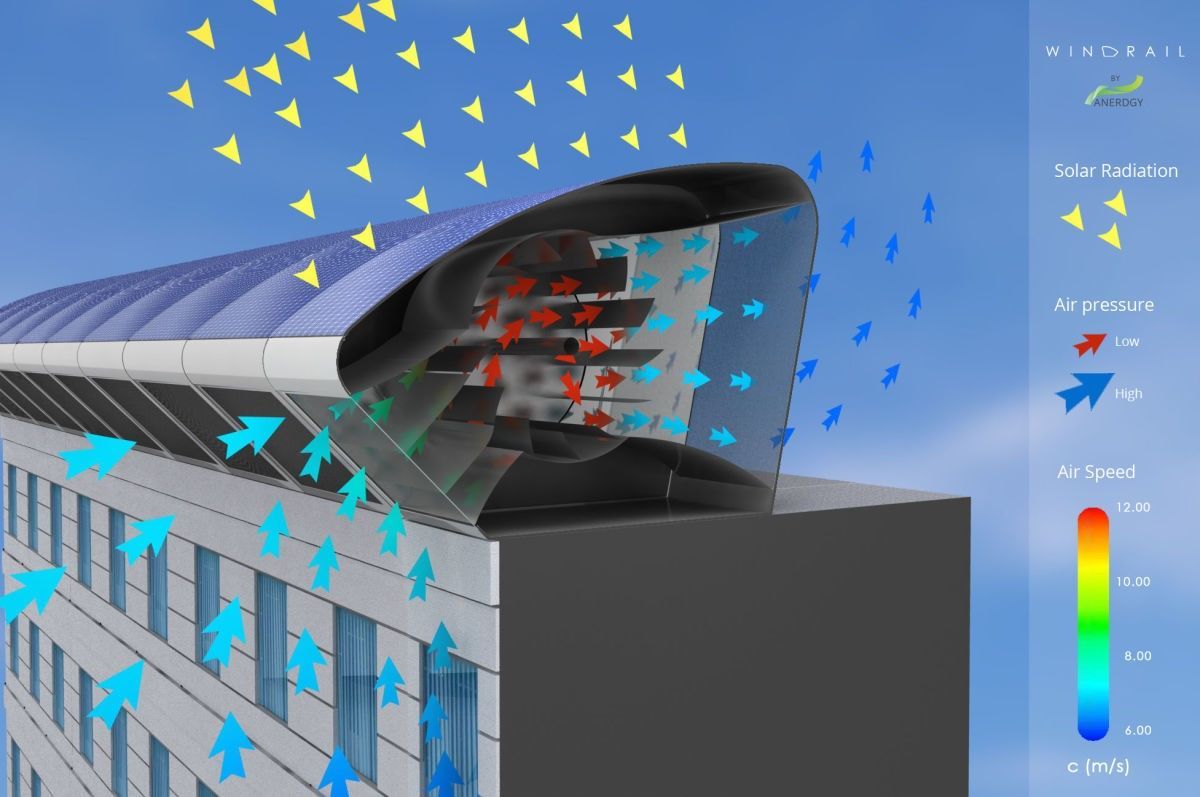Building-integrated wind turbine technology has been receiving a lot of heat for not being able to deliver what it promises in terms of energy production.
Fast Co. Exist profiles a system that places the turbines where they can actually turn. The WindRail was designed in Zurich, Switzerland, where there isn’t enough space for a wind or solar park. Sitting between a building’s façade and the roof edge, the system combines wind and solar energy harvesting, taking advantage of the building’s air flows, even if it's in the middle of a city.
The system was developed by the Anerdgy. “When wind flows around the building, it creates a pressure difference between the façade and the rooftop. The façade has a higher wind pressure,” CEO of Anerdgy Sven Koehler told Fast Co. Exist. “Because we are channeling the wind and making a connection between the high and low pressure areas, the speeds are faster and we have more energy.”
Koehler, an engineer and economist, came up with the idea with the help of his parents. After years of research, he came up with the WindRail System and started the company in 2012.
According to the company, pressure effect accounts for 50% of the power the WindRail generates. The device comes in two meter modules and can generate 1,500 to 2,000 kWh a year. For comparison, the average U.S. home uses 10,837 kWh a year, Fast Co. Exist reports.


Related Stories
| Aug 11, 2010
LEED 2009 cites FloorScore Certification as indicator of indoor air quality
The U.S. Green Building Council (USGBC) has cited FloorScore® certified flooring products as eligible for credits under the new LEED 2009 Version 3 guidelines. Reflecting the inclusion of FloorScore, the new LEED IEQ Credit 4.3 for Low-Emitting Materials has been expanded from “Carpet Systems” to “Flooring Systems” to include hard surface flooring.
| Aug 11, 2010
Billings at U.S. architecture firms exceeds $40 billion annually
In the three-year period leading up to the current recession, gross billings at U.S. architecture firms increased nearly $16 billion from 2005 and totaled $44.3 billion in 2008. This equates to 54 percent growth over the three-year period with annual growth of about 16 percent. These findings are from the American Institute of Architects (AIA) Business of Architecture: AIA Survey Report on Firm Characteristics.
| Aug 11, 2010
CHPS debuts high-performance building products database
The Collaborative for High Performance Schools (CHPS) made a new tool available to product manufacturers to help customers identify building products that contribute to sustainable, healthy, built environments. The tool is an online, searchable database where manufacturers can list products that have met certain environmental or health standards ranging from recycled content to materials that contribute to improved indoor air quality.
| Aug 11, 2010
29 Great Solutions for the AEC Industry
AEC firms are hotbeds of invention and innovation to meet client needs in today's highly competitive environment. The editors of Building Design+Construction are pleased to present 29 "Great Solutions" to some of the most complex problems and issues facing Building Teams today. Our solutions cover eight key areas: Design, BIM + IT, Collaboration, Healthcare, Products, Technology, Business Management, and Green Building.
| Aug 11, 2010
ASHRAE research targets tying together BIM and energy efficiency
Ensuring that a common language of “energy efficiency” is spoken by both building information modeling software used by architects and energy analysis and simulation software used by engineers is the goal of new research funded by ASHRAE.







